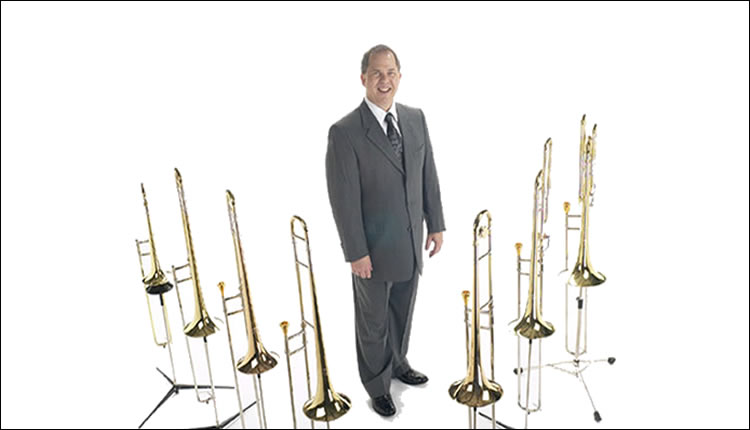Learning Your Way Around The Instrument-Warmup: Low-Middle-High on Each Position/Fingering.
by Harvey Phillips and Norlan Bewley
Warmup: Low-Middle-High on each position/fingering.
Low Brass Ensemble: Start with DUETS. Have everyone play the A part, then the B part. Divide the parts in a variety of combinations so everyone plays each part, learning to take the lead and to accompany. Move to simple trios as the students progress.
Issues: Low-Middle-High helps students learn their way around their instrument early on. Identifying notes as the position/fingering numbers plus low, middle, or high at first gives them an idea of where they are on the horn. They then have a reference to correct themselves if they get off: “Oh, I’m on 1 low and I’m supposed to be on 1 middle.” Note names have no real reference until you’ve already learned your way around. The musical alphabet is an easy way the teach note names in any clef.
Rhythm Positions/Fingerings help students build coordination for moving the slide and valves in rhythm. Have students say the trombone position numbers out loud while they move the slide in rhythm. Euphonium and tuba students say Tah out loud while pushing the valves in rhythm. They MUST say it out loud; silently does not work well. Have them whisper if they want to do it in rehearsal while another section is being rehearsed. Slow the tempo down to where it can be done in rhythm, then speed up the tempo, keeping in rhythm until the desired tempo is reached.
Tone Production is a tricky issue to teach, especially for beginners. Showing how warm air (vocal breath) is focused into fast air (wind or air stream) is very helpful. Have students whisper sing loudly on Tah and slide the pitch up and down as they would to sing (warm air). Note: no vocal chords are used when playing. While whispering Tah, have them form their embouchure into an Ooo shape, “grabbing” the air with their lips and focusing it into a strong sounding air stream (fast air). It will have a similar sound to the letter F, but it is all lips and air, no teeth. Corners will be firm and the sensation will be that the air is being pulled out, or “sucked right out of you”. A good playing exercise is to have students play a whole note, rest for a measure and continue repeating this in tempo several times to learn how to play the note and build strength.
MUSIC: Duets from band class books, Yamaha Band Ensembles book 1 – Alfred 5252
Trombone/Baritone + 5253 Tuba, Pop Duets For All – Belwin ELM 00078, Duets For All – Belwin PROBK 01331 Trombone/Baritone + PROBK 01332
For more information on Norlan Bewley please visit www.norlanbewley.com.
Click Here to Download the zip file of Sheet Music Exercises associated with this article.


